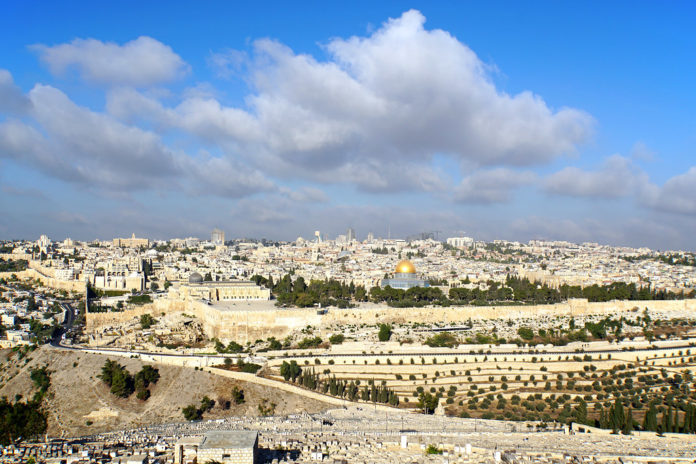
Torah readings: Tazria-M’tzora
DISEASE IN ANCIENT JERUSALEM
Contagious disease is a central feature of the Torah readings this Shabbat.
Strangely the disease did not spread in Temple times when thousands of pilgrims went up to the sanctuary. The city was crowded but somehow the populace remained safe.
There must have been something unique about their pilgrimage to Jerusalem, and unfortunately that saving grace seems lacking in our age.
An explanation seems to be contained in the Midrashic interpretation of the disease.
Though we usually translate the word “M’tzora” as “leper”, the sages viewed it metaphorically as the tendency to indulge in slander. “M’tzora” in that sense is “motzi shem ra”, a person who speaks badly of a neighbour.
The great gathering in ancient Jerusalem saw so much human niceness between people.
The pilgrims were protected by an aura of mutual appreciation and affection.
THE BARREN WOMAN WHO BECAME HAPPY
Parashat Tazria begins with the woman who conceives and bears a child.
It recalls Psalm 113, in which verse 9 ostensibly refers to the “akeret ha-bayit”, the “barren woman”, who becomes “em ha-banim s’mechah”, “the happy mother of children”.
Why does the verse not say “unhappy” before the phrase “akeret ha-bayit”?
Possibly “akeret ha-bayit” is not a barren woman at all; “akeret” could be connected with “ikkar”, which means “main thing”. In that sense, the main thing in a house is the “em ha-banim”, the mother who has a child or children.
Despite the moments of strain and worry, she feels not only happy but specially blessed by God.
PRIESTS & DOCTORS
There are sections of the Torah which some find rather irritating.
Only an architect or builder, so the argument runs, would be interested in the passages in Sh’mot that deal with the design and construction of the Tabernacle.
Only a doctor or nurse would be interested in today’s sidra with its medical detail about diagnosis and treatment.
So why not pass over this material and move to something more spiritual?
It is not difficult to suggest an answer. For the Torah, everything is spiritual.
It has been said that God is interested in many things other than religion: that is, if you see religion as merely priests, pews and prayers.
Judaism sees life and religion as coextensive. How you build a house, wash plates, run a business, see the stars – all are part of the scope of religion.
Hence it should not surprise us that the leprosy law in today’s reading involves the kohen. He is not simply an officiant in the sanctuary but also a public health official, investigating suspected leprosy, imposing a period of quarantine, pronouncing the disease cured. (There are various kinds of leprosy in the Bible, some more curable than others.)
But how did a spiritual leader reconcile his “religious” and “secular” interests?
Presumably his medical activity required training. Did this not detract from his religious studies?
One might ask the same question of famous rabbinical figures throughout history. After all, the Talmudic rabbis included scribes and astronomers, cobblers and gladiators. Rashi had a vineyard. The Rambam was a doctor.
It is not just that the rabbinate was not then a salaried profession and therefore people had to make a living. To be a member of the Sanhedrin a person had to be versed in the range of human activity.
The Rambam says, “We only appoint to the Sanhedrin men of wisdom and understanding, outstandingly expert in the Torah and possessed of wide knowledge. They should know something of all branches of knowledge, such as medicine, mathematics and the seasons and even the nonsense of idol-worship and other such subjects, so that they will be able to judge in such matters” (Laws of Sanhedrin 2:1).
This is not simply a matter of history, applying to the Sanhedrin of ancient days. In messianic days when the Sanhedrin is reconstituted, rabbis without secular knowledge will be at a disadvantage!
In truth, everything is part of religion. The Bible says, “In all your ways know Him” (Prov. 3:6).
In science, I see the Divine hand designing and directing an amazingly intricate universe. In the arts I see the creative spirit He has placed in the human heart and mind.
In medicine I see God-given healing protecting body and spirit. In law I see Him enabling man to build a balanced society dedicated to peace, justice and truth.
Wherever I go I see God. So-called secular study helps to reveal the Master of the Universe.
The Talmud took this for granted: a significant area of its concern is analysis of precisely such matters!
The kohen who diagnosed leprosy was therefore doing God’s work in the broader sanctuary of the human community.
Rabbi Raymond Apple was for many years Australia’s highest profile rabbi and the leading spokesman on Jewish religious issues. After serving congregations in London, Rabbi Apple was chief minister of the Great Synagogue, Sydney, for 32 years. He also held many public roles, particularly in the fields of chaplaincy, interfaith dialogue and Freemasonry, and is the recipient of several national and civic honours. Now retired, he lives in Jerusalem and blogs at http://www.oztorah.com









